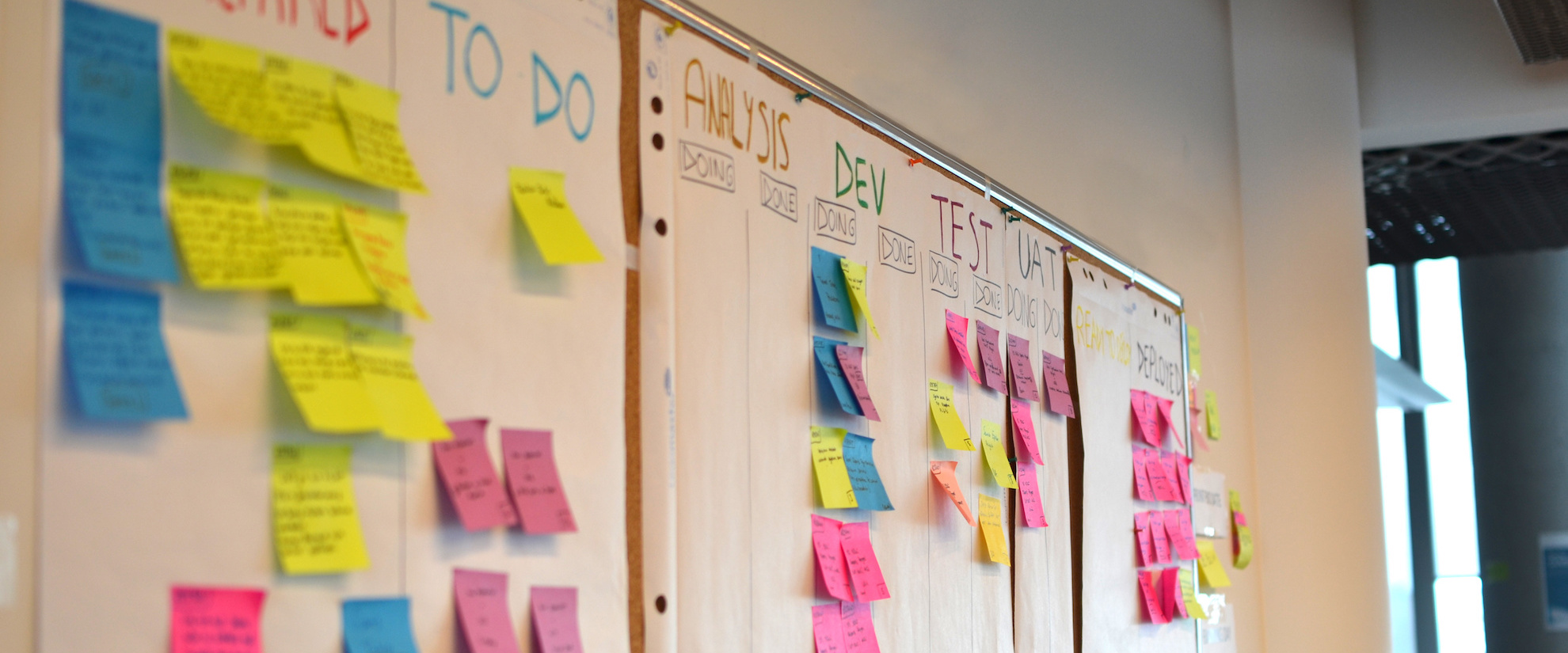You Can Do a Lot by Doing a Few Things
24 Feb, 2020 | By leslie@leanexpansion.ca

Today I am heading over to a medical clinic. I have been there a lot this year. Not because I am sick but because this is one of the biggest clients in my organization and it needs to improve. The caregivers here look after many people in this community, the sick, the healthy, the old, the young. People like you and me. My work as a leader always seems to pale in comparison to the work of providing good care. But all work can improve and have an even bigger impact on the patients they serve. And so I visit regularly.
When I arrive right after the clinic opens for the day, I take time to just watch, and observe that the problem that drove the core elements of my strategy months ago persists: patients are waiting.
Some are sick and eager to learn what it will take to get better so they can go home and crawl back into bed. Others are impatient. I see the tapping in their feet while they wait. They have busy lives yet they have made healthcare a priority. And we make them wait.
The first round of patients were all scheduled to come in at the same time, and so that’s what they do. The front desk is swamped. Ingrid can see their frustration and wishes she could change it, but she doesn’t control the scheduling. That’s between the doctors and the call center down the road. The doctors can’t see the problem: they are busy with their pre-visit planning, as they should be. They probably assume that Ingrid isn’t working hard enough, and, that if she did, everything would be okay. They can’t see that no matter how well Ingrid does her job, and she does it well, the patient will still wait. The problem is caused by the system and not Ingrid. It’s my job to see this problem. I own the system that created this situation.
And so I continue to observe everything I can, to see what is happening. It’s not necessary to talk to Ingrid as I watch. I can see her stress. The more I look, the more I see little problems, such as the forms they use frequently: why do they keep them so far away? And, why do they have yesterday’s schedule instead of today’s on their desk?
It’s very easy for me to get distracted by these and other wasteful actions. I need to stay focused. I need to continue to study the time waste the system created.
It’s harder to solve. But only I can mobilize all the resources it will take to figure this out. I never presume it to be easy. Patients have specific preferences for the timing of their appointment. The providers have commitments outside clinic office hours. They and other members of the staff serve the community in so many ways. The appointment system has to work for the other clinics also. This can be solved but it needs the view of many eyes and I am the one to put them all together and focus them.
In the back, some of the rooms are starting to fill up. I watch various players. I let them do what they do best. The medical assistants know their stuff, yet still, they struggle to keep up with the morning rush. I look to understand the differences between working time and takt time. Overall the work they have, while always a little different for each patient, always tailored to each person as a unique patient, is fundamentally the same and the MAs can accomplish what they need to with their patients at a rate that beats the overall rate arrival. It’s simple math. Done in my head. It centers me in the concepts of flow. I do the same for all the staff. I notice where the pace of the work can’t keep up. I can see patients waiting. Some of them are still in the lobby. Some are now behind a closed door. The waste is still there, just hidden. There is a bottleneck in our service here, waiting for the doctor.
The work I am doing today is very different from how I used to approach improvement. It has evolved over the years. It started with how I think about strategy. Years ago I wanted a strategy that was all things to all people. It was so general that it said nothing. “Improve flow in our clinics,” I might say. I did this convincing myself I knew what was going on. Leave the details for others, that’s the safest approach. This gave me little success however: a safe strategy got me a lot of agreement but very little engagement.
My sensei helped me to build my strategy differently. “Critical few,” he would tell me over and over. So now I go to the places where my biggest opportunities are and carefully, patiently observe the details. I use these details to build my plan. “Eliminate 5 minutes of waste in the doctor’s work and smooth the patient appointment time across the day by 30% for better flow in our clinics.” It’s a riskier strategy for sure. If I left it at simply “Improve flow,” few could argue with it.
Is that what makes a perfect plan?
Yes, a general strategy is a safe plan but it is not a practical one.
A tighter more detailed set of tactics opens up more debate. Why this clinic? Why not other areas? Why physician workflows? Why not Ingrid’s work or someone else’s? All of this had to be hashed out. Some would get what they wanted and some would not but all thought about it a little bit harder. Together we found the best success when our tactical elements took us to the waste surrounding the core value-added work.
I never could have embraced this new approach if I was tied to the idea that every clinic was unique and had its problems. It had nothing to do with inpatient services. The deeper I went into the details the more I began to recognize the important underlying common challenges. Each system was struggling with basic issues of flow, overburden, and waste. My job is to learn how to see this. And so now my strategy no longer stays general. It speaks to the specific in a general way.
It wasn’t easy to transition to this new way of working. I was used to spending a lot of time in meetings. In order to be successful, I had to do a lot of homework. Go see and sift through details. Talk to a lot of people. Find out why they disagreed. Do more homework. Settle the conflicts. And most importantly I had to deliver my strategy on time, not weeks or months past the start of the year. If I expected patients to be served on time, I had to deliver my work on time.
It is nerve-wracking to always put out a strategy that felt incomplete, that left doubts in my mind. But if it were to ever get to execution, there had to be a time when we would all learn the truth together, by doing.
My next stop is a meeting with Charlie, who oversees the doctors. I shared the first draft of my plan with him many months ago. We went to see together. He is reluctant to observe own process. He thinks he knows it. He has done this job but it’s also clouding his sight of what’s happening now. He wants to direct my focus elsewhere, away from the doctor’s work. He takes me down to the lab, trying to influence my strategy to get some work done there. He mentions that Ingrid is always talking on the phone. We go see the lab together. I go back several more times before I finish my plan. Yes, the lab struggles too. The same phenomenon of feast or famine is occurring. It makes sense that the highs and lows of the patient volume are amplified throughout the process. If we smooth the overall patient flow focused first on patients requiring laboratory services, we help the biggest need first. And Ingrid will be better off too. I change part of my plan for Charlie. “The waste in the physician workflow must still be tackled also,” I tell Charlie.
Letting others, like Charlie, influence my plan wasn’t easy. With all the analysis I was doing, I convinced myself I was right, which caused me to dig my heels in. “If I wanted to have the perfect plan, I had to change Charlie’s mind,” I thought. “Or maybe I could get away with ignoring their input altogether?” When someone asks me my opinion and I give it to him or her and they use it, I like it. It motivates me. That idea has made me more open to allowing my drafts to ebb and flow. Each year I became more open to input and with that came better execution and results on time.
“I’m sorry, we haven’t looked at the provider work yet,” Charlie explains to me, “we are just too busy.” I think to myself, that is true. Our time studies reveal time after time that the physician’s (the busiest people in the clinic) workflow is too long. I feel stuck. I can’t tell Charlie and his colleagues how to tackle their waste. They do the job. They know the job. They should decide. But they are drained.
I wish I knew more about psychology. How do you convince someone to help himself, knowing it is better for everyone?
I do my best to convince Charlie again to pull his team together, make their observations, separate the value from the waste and pursue the improvement they need. I have been in his position. I hate change. I don’t want to do it. I never feel like I get this coaching right. It’s tough to get the change to come from Charlie but at the same time not back down from the need of so many. I freely give Charlie and his team my time to understand and to guide.
We make plans to work with the team late this afternoon. I am a bit frustrated we are not moving faster. But I know it will be okay. The details of my plan have motivated other clinics to look deeper at their processes and go after the waste, even while my focus is here.
When I first began to learn the concepts of Strategy Deployment, my sensei told me it could take up to 40 years to be truly proficient at PDCA. Although that was nearly 20 years ago, I remember my only thought at the time, “But I only have until the end of the quarter to deliver results.” That is the world so many of us live in. No one has that kind of time to learn.
Developing a good strategy and actually executing to it is really hard. What I didn’t fully realize was how powerful just a little knowledge is along with a commitment to do things differently.



